 Your new post is loading...
 Your new post is loading...
Samsung "space zoom" moon shots are fake, and here is the proof "Many of us have witnessed the breathtaking moon photos taken with the latest zoom lenses, starting with the S20 Ultra. Nevertheless, I've always had doubts about their authenticity, as they appear almost too perfect. While these images are not necessarily outright fabrications, neither are they entirely genuine. Let me explain. There have been many threads on this, and many people believe that the moon photos are real (inputmag) - even MKBHD has claimed in this popular youtube short that the moon is not an overlay, like Huawei has been accused of in the past. But he's not correct. So, while many have tried to prove that Samsung fakes the moon shots, I think nobody succeeded - until now. WHAT I DID -
I downloaded this high-res image of the moon from the internet - https://imgur.com/PIAjVKp -
I downsized it to 170x170 pixels and applied a gaussian blur, so that all the detail is GONE. This means it's not recoverable, the information is just not there, it's digitally blurred: https://imgur.com/xEyLajW And a 4x upscaled version so that you can better appreciate the blur: https://imgur.com/3STX9mZ 3) I full-screened the image on my monitor (showing it at 170x170 pixels, blurred), moved to the other end of the room, and turned off all the lights. Zoomed into the monitor and voila - https://imgur.com/ifIHr3S 4) This is the image I got - https://imgur.com/bXJOZgI
Nicholas Nixon was visiting his wife’s family when, “on a whim,” he said, he asked her and her three sisters if he could take their picture. It was summer 1975, and a black-and-white photograph of four young women — elbows casually attenuated, in summer shirts and pants, standing pale and luminous against a velvety background of trees and lawn — was the result. A year later, at the graduation of one of the sisters, while readying a shot of them, he suggested they line up in the same order. After he saw the image, he asked them if they might do it every year. “They seemed O.K. with it,” he said; thus began a project that has spanned almost his whole career. The series, which has been shown around the world over the past four decades, will be on view at the Museum of Modern Art, coinciding with the museum’s publication of the book “The Brown Sisters: Forty Years” in November. Who are these sisters? We’re never told (though we know their names: from left, Heather, Mimi, Bebe and Laurie; Bebe, of the penetrating gaze, is Nixon’s wife). The human impulse is to look for clues, but soon we dispense with our anthropological scrutiny — Irish? Yankee, quite likely, with their decidedly glamour-neutral attitudes — and our curiosity becomes piqued instead by their undaunted stares. All four sisters almost always look directly at the camera, as if to make contact, even if their gazes are guarded or restrained.
Capturing light is becoming a thing of the past : with computational photography it is now eclipsed by processing pixels.
iPhone 11 and its « Deep Fusion » mode leave no doubt that photography is now software and that software is also eating cameras.
An inability to handle misty driving conditions has been one of the chief obstacles to the development of autonomous vehicular navigation systems that use visible light, which are preferable to radar-based systems for their high resolution and ability to read road signs and track lane markers. So, the MIT system could be a crucial step toward self-driving cars. The researchers tested the system using a small tank of water with the vibrating motor from a humidifier immersed in it. In fog so dense that human vision could penetrate only 36 centimeters, the system was able to resolve images of objects and gauge their depth at a range of 57 centimeters. Fifty-seven centimeters is not a great distance, but the fog produced for the study is far denser than any that a human driver would have to contend with; in the real world, a typical fog might afford a visibility of about 30 to 50 meters. The vital point is that the system performed better than human vision, whereas most imaging systems perform far worse. A navigation system that was even as good as a human driver at driving in fog would be a huge breakthrough. "I decided to take on the challenge of developing a system that can see through actual fog," says Guy Satat, a graduate student in the MIT Media Lab, who led the research. "We're dealing with realistic fog, which is dense, dynamic, and heterogeneous. It is constantly moving and changing, with patches of denser or less-dense fog. Other methods are not designed to cope with such realistic scenarios." Satat and his colleagues describe their system in a paper they'll present at the International Conference on Computational Photography in May. Satat is first author on the paper, and he's joined by his thesis advisor, associate professor of media arts and sciences Ramesh Raskar, and by Matthew Tancik, who was a graduate student in electrical engineering and computer science when the work was done.
Je partage le quotidien des gens durant 24h, je photographie leur vie. Je témoigne de leurs beautés : celle de ce quotidien, celle de leur vie telle qu'elle est. La beauté de leur être. Ici se sont les 24h de Odette, je suis arrivée chez elle à 17h le jour de son 95 éme anniversaire et repartie le lendemain à 17h. mars2015
Beginning in the mid-1850s, Paris experienced a grand transformation. At the orders of Napoleon III, old, narrow streets made way for wide boulevards, thousands of gas lamps lit the streets at night, and a host of other public projects thoroughly modernized the city. Charles Marville, a photographer employed by the city, was charged with documenting those changes. “The random, organic city, the city built by successive generations on top of itself, was pushed back and de-emphasized. The standardized city we see today was replaced,” said Jeff Rosenheim, curator of “Charles Marville: Photographer of Paris,” now on display at the Metropolitan Museum of Art in New York.
YOUR CAMERA DOESN’T MATTER The vast majority of imagery is now seen in the exact same places: on smartphones and tablets, via apps such as Pinterest, Facebook, Google+, Flipboard and most importantly, Instagram.
At 1024 x 1024 pixels, who can really tell whether a photo was taken on an iPhone or a Canon 5D? More to the point, who cares?
French tourist Nathalie Rollandin came across a camera-happy seagull recently. She was visiting the Golden Gate Bridge in San Francisco, when she set her GoPro camera down while its was recording. Before she knew it, the camera was being carried away in the mouth of an artsy gull. Once the bird was a safe distance away, it set the camera down and recorded some beautiful footage of itself flying away into the sunset.
Antelope Canyon is amazing when visited around (solar) noon time
|
If you love landscape photography you'll be blown away by the winners of the 2019 Landscape Photographer of the Year contest.
Are you reading this on a handheld device? There’s a good chance you are. Now imagine how’d you look if that device suddenly disappeared. Lonely? Slightly crazy? Perhaps next to a person being ignored? As we are sucked in ever more by the screens we carry around, even in the company of friends and family, the hunched pose of the phone-absorbed seems increasingly normal. US photographer Eric Pickersgill has created “Removed,” a series of photos to remind us of how strange that pose actually is. In each portrait, electronic devices have been “edited out” (removed before the photo was taken, from people who’d been using them) so that people stare at their hands, or the empty space between their hands, often ignoring beautiful surroundings or opportunities for human connection. The results are a bit sad and eerie—and a reminder, perhaps, to put our phones away.
Developed in China, the lidar-based system can cut through city smog to resolve human-sized features at vast distances. Long-distance photography on Earth is a tricky challenge. Capturing enough light from a subject at great distances is not easy. And even then, the atmosphere introduces distortions that can ruin the image; so does pollution, which is a particular problem in cities. That makes it hard to get any kind of image beyond a distance of a few kilometers or so (assuming the camera is mounted high enough off the ground to cope with Earth’s curvature). But in recent years, researchers have begun to exploit sensitive photodetectors to do much better. These detectors are so sensitive they can pick up single photons and use them to piece together images of subjects up to 10 kilometers (six miles) away. Nevertheless, physicists would love to improve even more. And today, Zheng-Ping Li and colleagues from the University of Science and Technology of China in Shanghai show how to photograph subjects up to 45 km (28 miles) away in a smog-plagued urban environment. Their technique uses single-photon detectors combined with a unique computational imaging algorithm that achieves super-high-resolution images by knitting together the sparsest of data points.
Upsampling techniques to create larger versions of low-resolution images have been around for a long time – at least as long as TV detectives have been asking computers to 'enhance' images. Common linear methods fill in new pixels using simple and fixed combinations of nearby existing pixel values, but fail to increase image detail. The engineers at Google's research lab have now created a new way of upsampling images that achieves noticeably better results than the previously existing methods. RAISR (Rapid and Accurate Image Super-Resolution) uses machine learning to train an algorithm using pairs of images, one low-resolution, the other with a high pixel count. RAISR creates filters that can recreate image detail that is comparable to the original, when applied to each pixel of a low-resolution image. Filters are trained according to edge features that are found in specific small areas of images, including edge direction, edge strength and how directional the egde is. The training process with a database of 10000 image pairs takes approximately an hour.
The photograph precipitated a dramatic change in how we perceive history. Amazing historic photos, like the ones in this list gathered by Bored Panda, can make it seem like you were standing right there during that historic moment.
Model maker/collector and photographer Michael Paul Smith is a master at recreating incredibly accurate outdoor scenes using his extensive die-cast model car collection and forced perspective. Mixing up miniature cars, detail items and buildings into a scene whose backdrop is the real world, he shoots the gorgeous miniature vistas of the town he has created and named “Elgin Park” — and he does it all with a cheap point-and-shoot. Elgin Park is some 25 years in the making, as are Smith’s modeling and diorama photography skills. In an extensive interview with Fstoppers, he describes his tools, his process and the minute attention to detail that creating these scenes requires. Ironically, Smith has diagnosed himself as “math challenged,” so when it comes to properly framing the forced perspective, he simply eyeballs it. Years of experience have led to an uncanny ability to do this right on the first shot, but if he doesn’t, he simply goes up and unceremoniously drags his table/models into the correct spot.
To me, photographic gear is like gourmet food. I see cameras as the entrées, lenses and other equipment are the side dishes and wines. While compact cameras are the sweet desserts. Sometimes, the d...
Via kris phan, Gary Pageau
|



 Your new post is loading...
Your new post is loading...




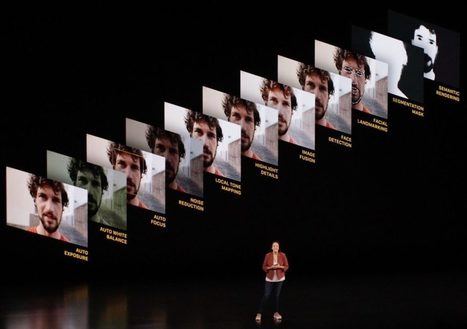

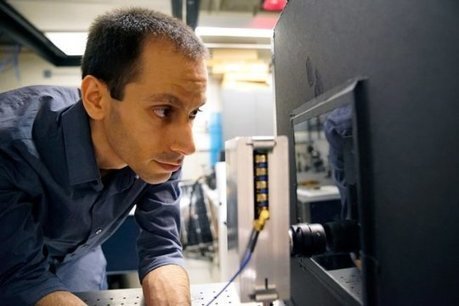


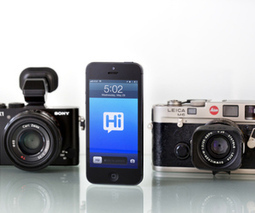


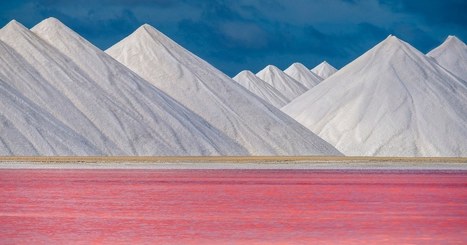
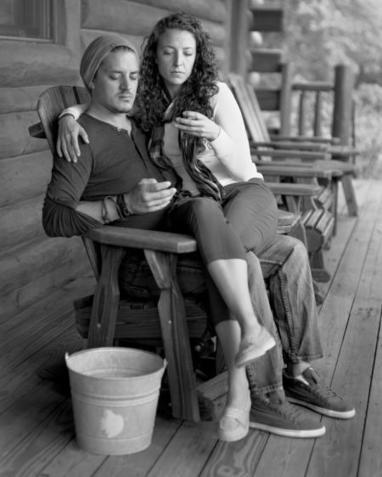



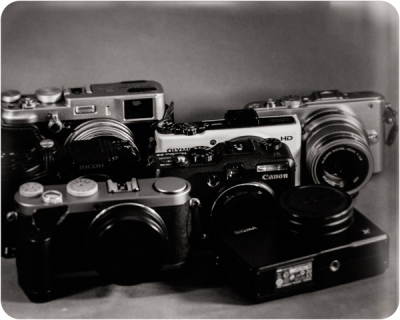






Walking across the thin line between computational photography and image (re)creation.
I suggest that photographers using AI software for upscaling and cleaning pictures (such as Topaz Photo AI) explicitly mention it.